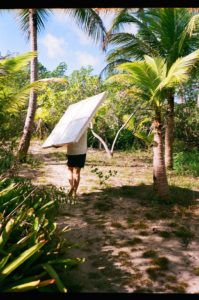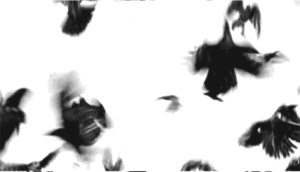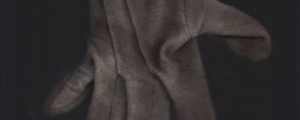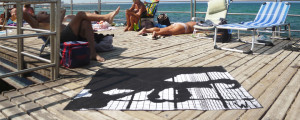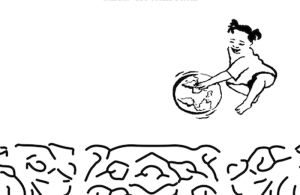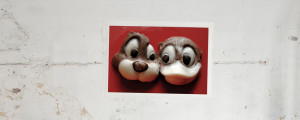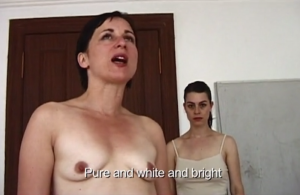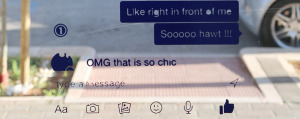The Il Futuro era bellissimo per noi group exhibition features 13 artists and takes its title from lyrics of an Italian pop song. It’s called Odio le favole by Ermal Meta, and follows themes of dramatic love in a temporal paradox; a logical contradiction in the sentence, “The future was very beautiful for us”. Pop music references are a constant in the program and approach of Bari-based “project staircase” 63rd-77th STEPS. Run by Italian artist and curator Fabio Santacroce, its website carries on this tradition with this most recent off-site exhibition, running April 14 to 30, in an online press release entrusted with the heart-breaking words of another famous song by Gianna Nannini feat. Don Backy, L’immensità (‘immensity’ in English). Said track plays over the desolate webpage background of a tiled gif of blacks birds taking flight in a wintry-white sky.
While Santacroce’s 63rd-77th STEPS project was born from the in-between-space of the top steps of a multi-floor building in Bari its named after, Il Futuro era bellissimo per noi, too, explores ideas of landings and gaps. During her residency at Cité Internationale des Arts in Paris, young French artist Anna Solal invited Santacroce to fill the space of her temporary n°8003 first-floor studio apartment with works by themselves, and other artists including Mariantonietta Bagliato, Mathis Collins, Cédric Fargues, Anna Franceschini, Frieder Haller, Kareem Lotfy, Emanuele Marcuccio, Quintessa Matranga, Josip Novosel, Ilya Smirnov and Sean Townley.
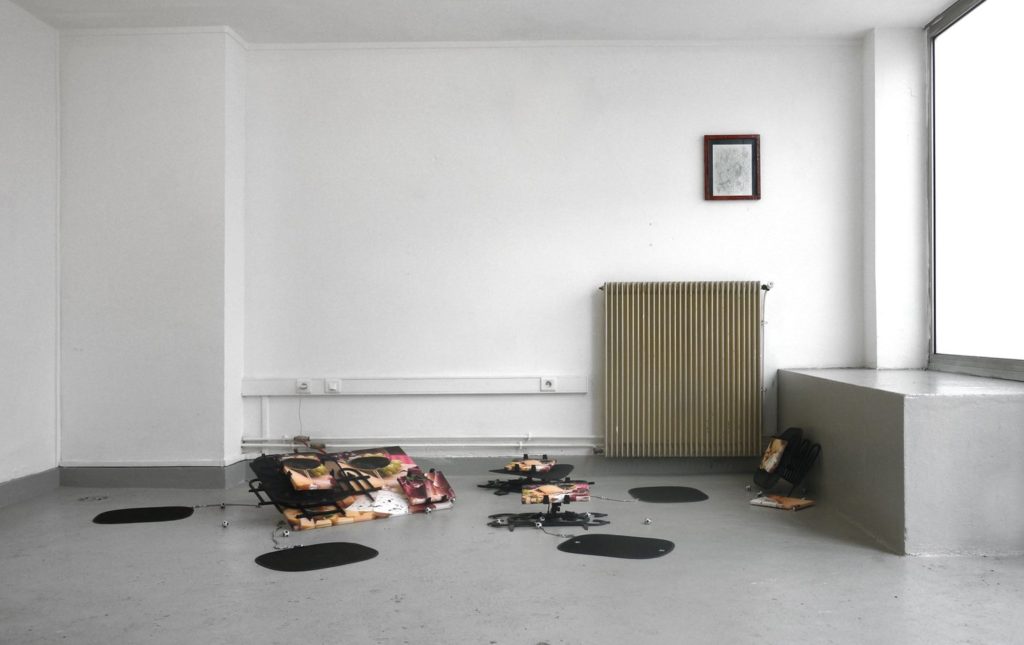
Questions of temporality settle at once with the outside project, ‘Lambrequin’ (2016) of Mathis Collins that sinks, drips and dries on the facade of the studio. After swathing a big red sheet on the front door as a kind of tent, the artist himself sits outside during its installation, collecting his liquid consumables —drinks, beers, wines, coffees —and pouring their sweet, acid, sticky contents on the canopy. Taken down and hung up again inside the studio, the fabric wears the stigma of its production time. On the floor, some ‘archeological’ objects remind us that the present is permanently in flight, suspended between past and future. Solal’s ‘Kites’ —part shields and part children’s toys —mix fabrics, decal stickers, bicycle chains and the screen of a smashed-up iPad screen. Close by, Santacroce’s installation quotes the exhibition’s title and confronts tradition and modernity, between the French clichés printed on canvas and customised car side window sunshades.
Everything in Il Futuro era bellissimo per noi is about mythologies: those that explain our past and those that will shape the world of tomorrow. This meeting of the antiquated and the modern comes in works like Anna Franceschini’s film, ‘Before they break, before they die, they fly!’ playing on loop and showing us some small tourist souvenirs from Rome, like the Colosseum, a helmet, Saint Cecilia’s statue, almost made sacred suspended above a magnetic levitation pad. But this is also the ambivalence of the myth that is at stake in the floor piece by Sean Townley. His small sculpture ‘Intrinsic Apoptotic Pathways’ (2013) is a cast made from a kapala skullcup. According to legend when a Tantra Buddhist or Hindu monk dies, the upper part of the skull is cut and then decorated with gems and precious metals. These often serve then as containers, such as cups or memento mori.
Then there are the idols and their offerings. A customized half-unpacked present by Quintessa Matranga. A foam vital organ suspended —a kind of large human heart —by Mariantonieta Bagliato. A ham biscuit totem cut into the shape of a hand on the sink by Cédric Fargues. Emanuele Marcuccio participates in the chorus of voices composing the show through one of his recurring cold and metallic sheets, its geometric cuts shaped into abstract faces and stick figures. Here, his ‘I wanted something calm’ work welcomes the visitor, acting as a sort of metal front door or, inversely, blocking access to that implosive environment that constitutes the whole exhibition, overseeing this place of temporary work, in a space already awaiting another tenant.
On his side, Frieder Haller articulates a concrete, treacherous path along the existing staircase inside the space, creating additional steps and level in small wood and concrete constructions that complicate its climbs and descents within the existing practical ones. This conflict, also enunciated in the title, is everywhere. It is temporal first but also spatial, as behind a half-closed door an audio track by Kareem Lotfy called ‘French connection environment’ is hidden at the centre of an abandoned mess in the kitchen.
The transitional space, the architecture itself, the works and its installation; its temporal value, its multiple references, its fragile sustainability. Like the discreet drawing by Ilya Smirnov, ‘No Title Provided’, placed above the radiator, or the small consumed candles on canvases by Josip Nosovel in the corner, Il Futuro era bellissimo per noi triggers a short-circuit mixing low and high culture, dominant historical narratives and esoterica, pop culture and cheap technology—temporalities, language, tone —in a moment that is both sentimental in mood and very dark in humour.**
Exhibition photos, top right.

